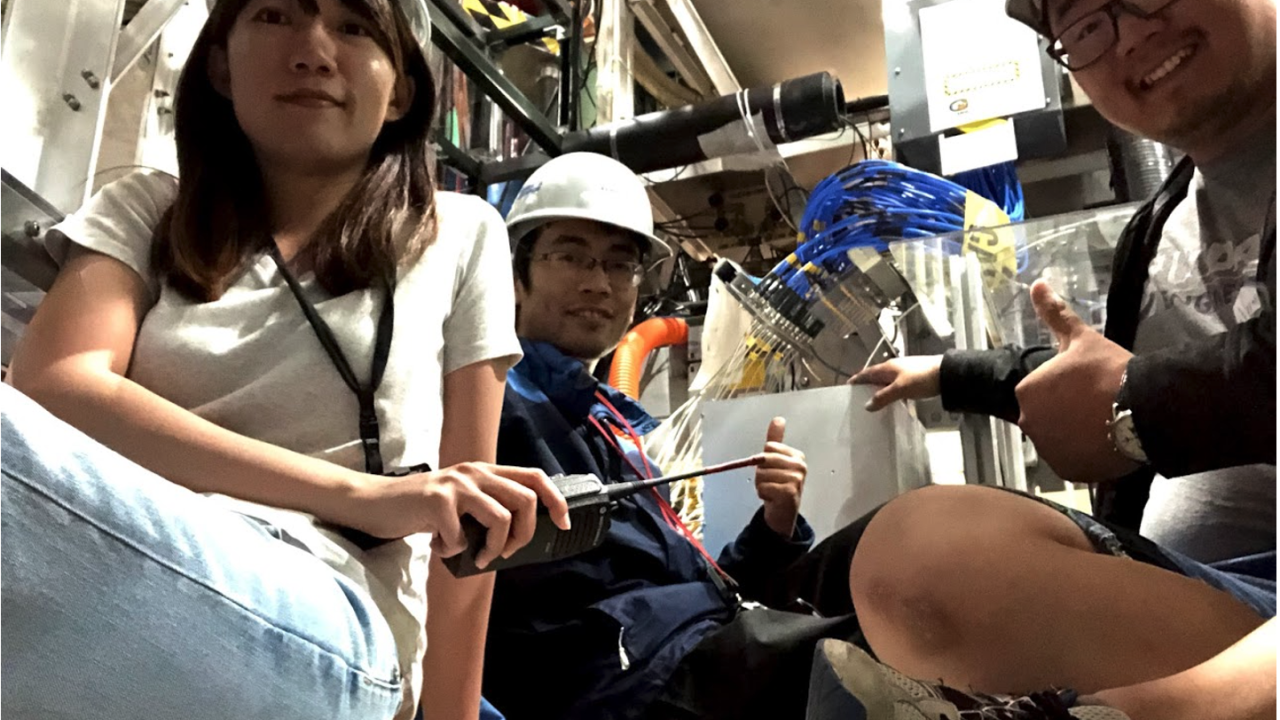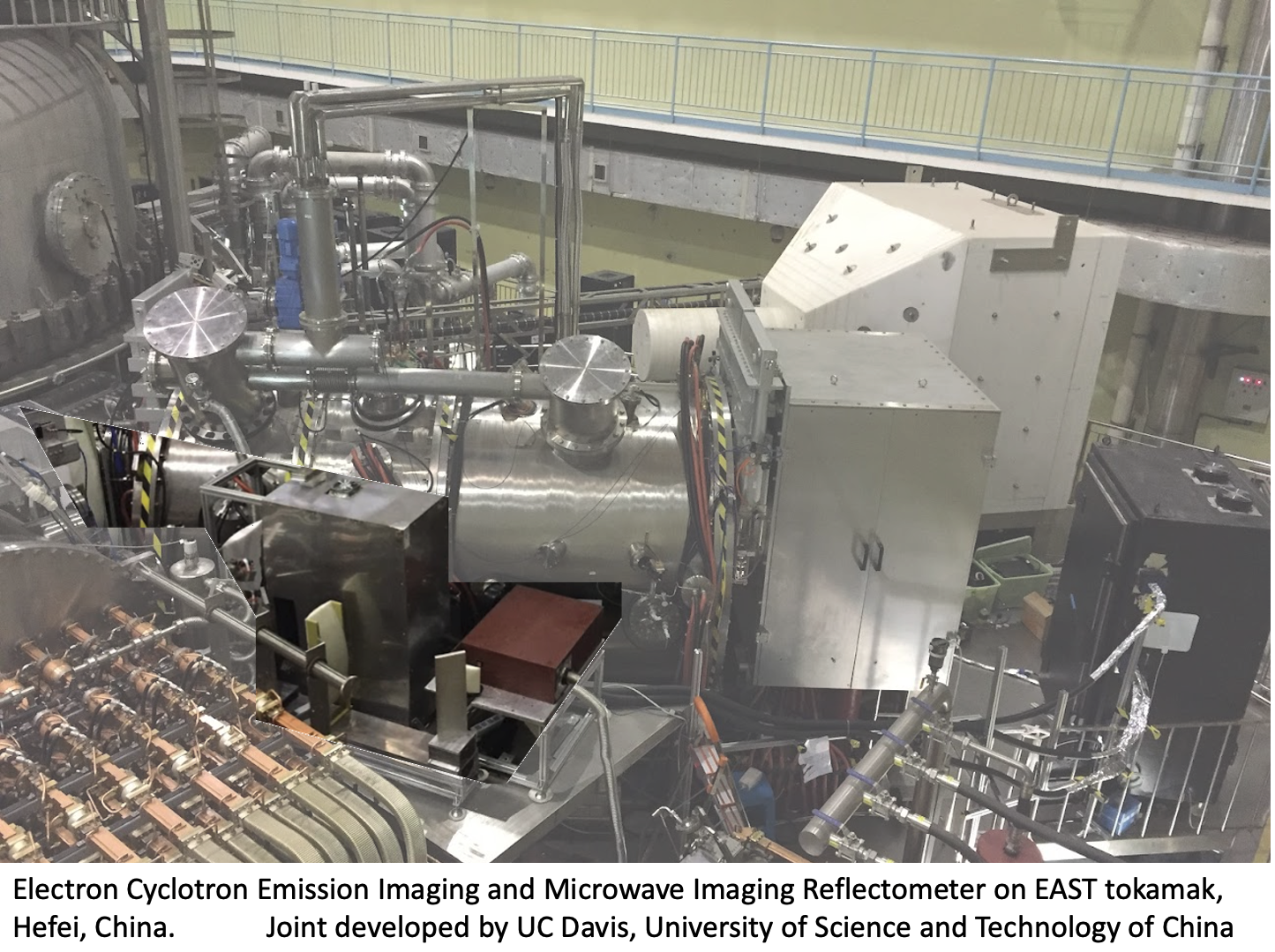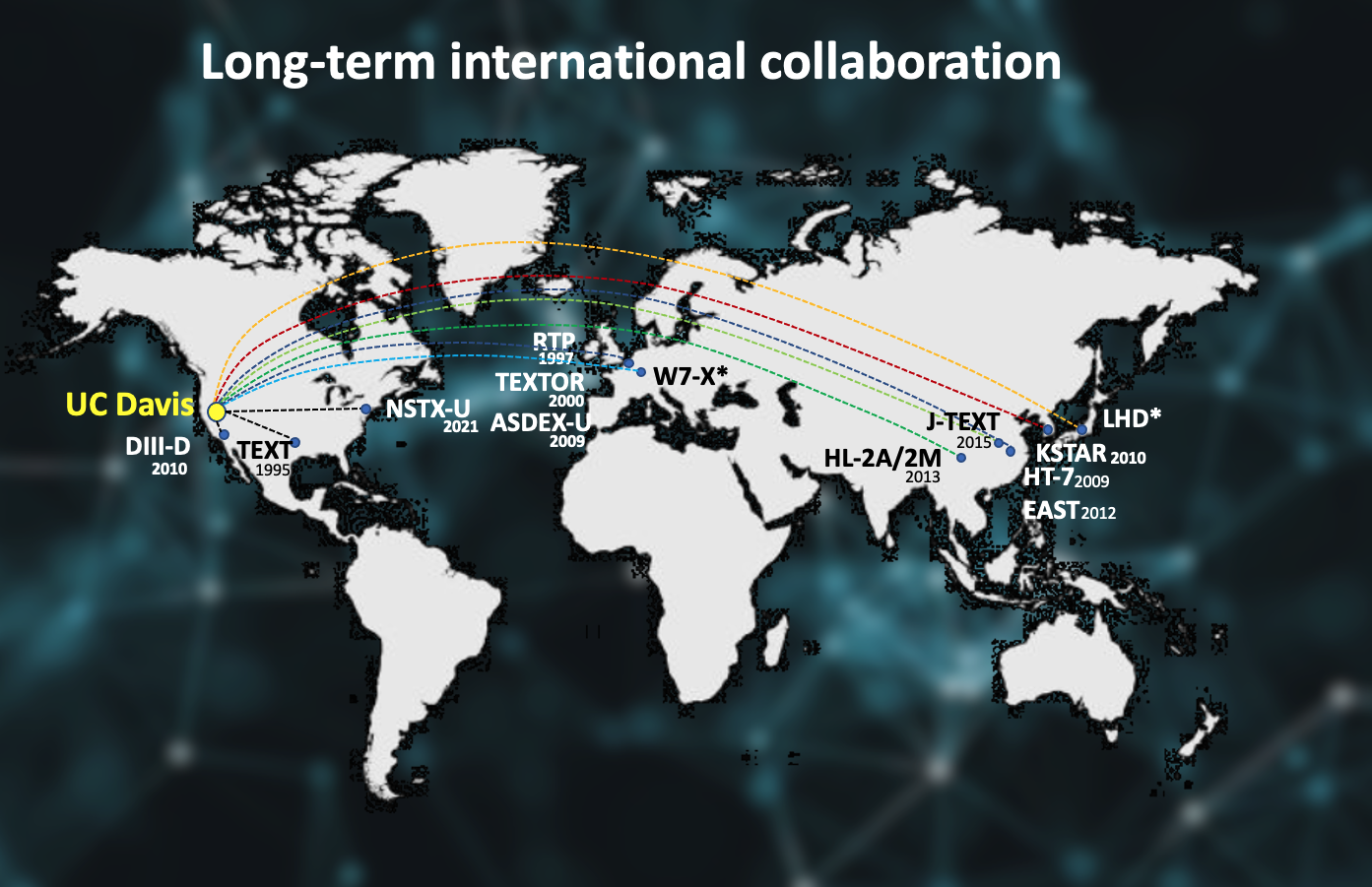
Research Spotlight: ECE Professor Neville Luhmann's Lab Builds High-Speed Cameras for the Millimeter-Wave Imaging Needed to Control Fusion Reactor Turbulence
Enabling cheaper, greener, safer power
Quick Summary
- The Luhmann lab develops superfast cameras that can detect dangerous plasma turbulence and protect nuclear fusion reactors
- They see nuclear fusion as an essential tool in the move away from fossil fuels.
UC Davis electrical and computer engineering (ECE) professor Neville Luhmann and project scientist Yilun Zhu are carrying out research crucial to the operation of nuclear fusion energy. In particular, they are developing high-speed cameras capable of millimeter-wave imaging.
As Zhu explains, “In general, we require high resolution probes to measure particle density, temperature, flow velocity, and heat pressure in fusion reactors for safe operation and physics studies. However, conventional probes cannot survive the 100-million-degree fusion core. Consequently, UC Davis has developed active and passive imaging diagnostics (Electron Cyclotron Emission Radiometric Imaging, Microwave Imaging Radar Reflectometric Imaging, and Collective Thomson Scattering) for real-time measurements by receiving millimeter-wave signals from the reactor through tiny observation windows without physically touching the plasma.”

A current challenge for safe nuclear fusion reactor operation is controlling material that can easily become unstable and is so hot it exists as plasma. This magnetohydrodynamic and microturbulence instability occurs on the scale of microseconds and can put a reactor and the people operating it at risk if left to continue. Monitoring it requires a high-speed camera to monitor fluctuations at a speed of over one million frames per second. The Electron Cyclotron Emission Imaging and Microwave Radar Reflectometric Imaging instruments have accomplished this purpose and provided essential experimental results which have led to over 50 scientific publications in the previous 10 years.
Luhmann has led research laboratories focused on nuclear fusion diagnostics technology development and studies at the frontier of physics since the 1970s. In the previous decade, Luhmann's UC Davis’ laboratory invented advanced millimeter-wave imaging fusion plasma diagnostics.
“The technologies invented by UC Davis researchers and their international collaborators included passive radiometric electron cyclotron emission imaging, active microwave radar reflectometric imaging, active collective Thomson scattering, numerical synthetic imaging, multi-scale millimeter-wave scattering, and interferometers. The jointly developed instruments have been applied on eight major experimental fusion facilities in the United States, Europe, and Asia,” explains Zhu.

As Zhu also points out, each development comes because of highly educated people. “Good education offers a long-term return. Over 100 professionals have been educated and trained in this research group, and some have made significant contributions in multiple scientific and industrial areas.”
Some may prefer that as we move beyond carbon-based fuels, that we go in the direction of renewables rather than nuclear power.
Zhu speaks to this point. “Energy exploitation is a hallmark of civilization. [In this lab] we all believe that renewable energy is important. Unfortunately, renewable energy cannot entirely fill the energy shortfall we would have if we stopped using fossil fuels. We need other solutions, including nuclear power. However, people are justifiably worried about the potential for accidents and leakage from fission reactors, so it’s urgent to develop fusion reactors to obtain safer and greener energy, as well as a virtually limitless fuel supply.”
He sees fusion as playing an essential role in the future of global energy.
Right now the Luhmann lab collaborates with San Diego-based business partner General Atomics on fusion plasma and safe operation testing. Previous students who worked in the lab have assumed high-level positions in the energy industry in both the U.S. and China.
As Zhu explains, “The close connection between university and business accelerates the transformation of nuclear fusion from a cutting-edge technology to a widely used application with social and environmental benefits.”
